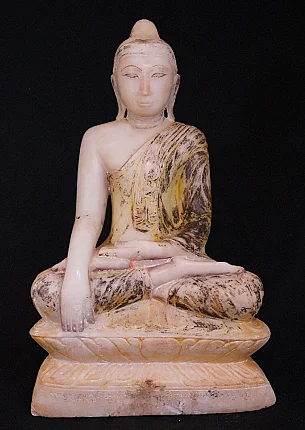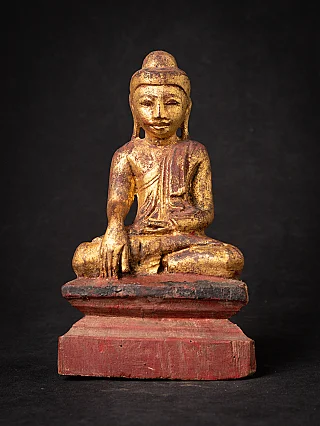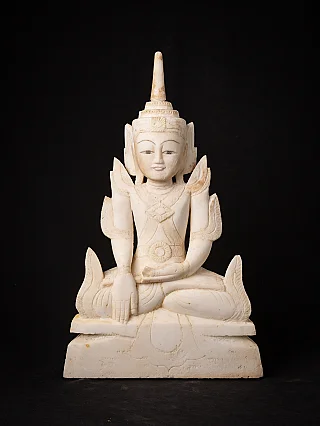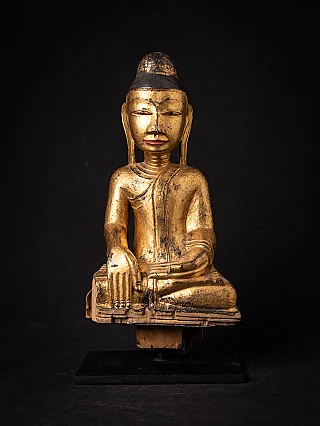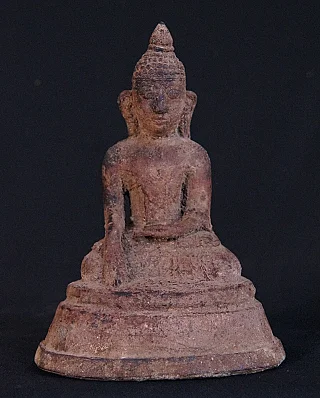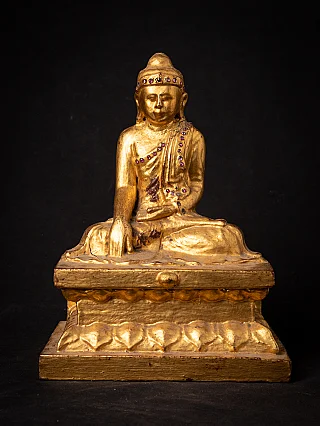Bhavachakra - The Wheel of Life
Author : Peter Vredeveld

Bhavachakra is a symbolic representation of Cyclic Existence. It is believed that Lord Buddha drew this representation himself to help ordinary people so that they could easily understand the teachings of Buddha.
Bhavachakra is the popular artistic representation on the outside walls of Tibetan Buddhist temples and monasteries. Bhavachakra, also known as the Wheel of Life, symbolizes Samsara or cyclic existence. The Wheel of Life is one of the most common aspects of Buddhist art. The Wheel of Life was believed to have been drawn by Lord Buddha himself to help and guide the ordinary people about the teachings of Buddha, Karma, Six realms of Samsara, three poisons, and so on. The Wheel of Life is called The Wheel of Cyclic Existence and the Wheel of Becoming.
Overview of Bhavachakra
According to Tibetan Buddhist tradition, the reason for painting the Bhavachakra outside the Tibetan temples and monasteries is to teach simple-minded, ordinary people about the philosophy of life and the teachings of Buddha. The Bhavachakra consists of many layers and figures. Each layer, figure, and diagram has its meaning.
Fundamental Aspects of the Wheel of Life

The Hub:
The center of the Wheel is called the hub, and the figures in the hub represent the three poisons. These three poisons are represented by three animals: a pig, a snake, and a bird. In Bhavachakra, the three poisons mean ignorance, attachment, and aversion. In the Wheel of Life, the three animals are grasping each other tails. The pig in the hub represents the poison, ignorance. The pig is represented as the core of ignorance since it sleeps in the dirtiest place and eats everything that comes to its mouth. The snake represents the poison, aversion. The aversion means anger, and it suits the nature of the snake perfectly since the snake gets aroused even if it is touched slightly. The bird in the hub represents the attachment. The poison attachment also means desire or clinging. This particular bird from India is said to be very attached to its partner. These three poisons represent the core of the Bhavachakra. The three poisons influenced the next layer of Karma.
Karma:

After the core hub of the Wheel of Life, the second layer represents the two halves of Karma. The first half of the layer shows the people moving to the higher realms, whereas the second half shows the people in the miserable state who are moving to the lower realms. These two halves show the cause and effect of the result of Karma. The people of the first half move to higher realms due to positive and good actions. The people of the second half move to lower realms due to the result of evil and harmful actions. Due to their Karma, the people take rebirth in the six realms of Samsara, which is shown in the third layer of Bhavachakra.
Six Realms of Samsara:
After three poisons and two halves of Karma, the third layer represents the six realms of Samsara or cyclic existence. The six realms are divided into higher realms and lower realms. These six realms of Samsara are taught in the teachings of Buddhist tradition. They are gods, demigods, humans, animals, hungry ghosts, and hell realm. The first three realms are considered higher, and the last three are categorized as lower. The three higher realms are:
- Three Higher Realms:
- God realm: The God realm is also known as the Deva realm. According to Buddha's teachings, gods lived a life of pleasure and spent their lives with meaningless work. They never think to practice Dharma. That is why they are reborn in the lower realms of Samsara when they die.
- Demigod realm: The Demigod realm is also known as the Ashura realm. Demigod also lives a life of pleasure as well as an abundance. They spent their lives fighting against God and suffered from constant fighting.
- Human Realm: The Human realm is also known as the Manusya realm. Unlike gods and demigods, humans lack pleasure and abundance. They suffer from many things, like lack of food, separation from friends, and life cycle. That's why the human realm is considered the best realm for practicing Dharma.
- Three Lower Realms:
- Animal realm: The Animal realm is also known as the Tiryagyoni realm. Animals suffered from being attacked by dangerous animals, and domestic animals suffered from exploiting humans.
- Hungry Ghost realm: The Hungry Ghost realm is also known as the Preta realm. Hungry ghosts always suffer from constant hunger and look for food and drink.
- Hell realm: The Hell realm is also known as the Naraka realm. Hell is considered the lowest realm among the six realms of Samsara. Hell beings always suffer from unimaginable torment either in the hot hell or cold hell for the eternity of time.
Twelve Links of Dependent Origination:
The fourth layer of the Bhavachakra represents the twelve links of dependent origination. The twelve links show how Karma's cause and effect work in detail. These twelve links are:
- Avidya (lack of knowledge)
- Samskara (constructive volitional activity)
- Vijnana (consciousness)
- Namarupa (name and form)
- Sadayatana (six senses)
- Sparsa (contact)
- Vedana (pain)
- Trsna (thirst)
- Upadana (grasping)
- Bhava (coming to be)
- Jati (being born)
- Jaramarana (old and death)
Impermanence: The Figure Holding the Wheel
The figure holding the Wheel of three poisons, Karma, and realms is called Impermanence. The Impermanence is shown in the form of the monster depicted as the Yama, the God of death. According to the Dalai Lama, Yama is a fearful and wrathful master who symbolizes the various attributes. They are:
- Yama wears a crown of five skulls that are said to symbolize the five poisons.
- Yama has the third and was believed to see everything in the Wheel of Dharma.
- Yama is depicted as the figure that wears the skin of a tiger.
- Yama's four limbs represent life's four sufferings: birth, old age, sickness, and death.
Liberation from Samsara
- A figure similar to the moon above the wheels of life represents the liberation from Samsara's suffering.
- Above the Wheel is a figure of Lord Buddha, and in the Bhavachakra, Lord Buddha points to the direction of the moon or path to end the suffering of Samsara.
Share this page


















